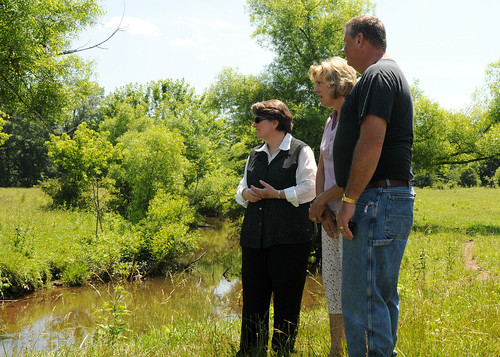By USDA Deputy Secretary Kathleen Merrigan
On Friday, I was pleased to be part of unveiling the latest step in the Obama Administration’s strategy for restoring the Chesapeake Bay with the announcement of three Showcase Watershed projects in Pennsylvania, Maryland and Virginia.
The Showcase Watershed pilot projects will demonstrate what can be accomplished by bringing people, sound science and funding together to solve natural resource problems in a targeted area.
USDA and our partners are helping farmers within the Showcase Watersheds implement voluntary conservation practices to reduce nutrient and sediment runoff. This matters, because all of the water that enters waterways from local farms in the watersheds eventually ends up in the Bay. Successful approaches learned in Showcase areas can serve as models for restoring ecosystems elsewhere in the country.
A thriving and sustainable agricultural sector is essential to the restoration of the Chesapeake Bay, so the announcement of the Showcase Watersheds was made from a working farm in each State. I was honored to attend the launch event in Pennsylvania at the Eby-Patterson farm in Hershey, where the owners raise beef cattle and are excellent stewards of their natural resources.
We had the opportunity to examine the positive changes in the Conewago Creek that runs through their property. With experts from our Natural Resources Conservation Service on hand we examined the aquatic life that is thriving in the creek and talked with the Patterson family about their efforts to contribute to a healthier watershed.All three watersheds—Smith Creek in Virginia, Upper Chester River in Maryland and Conewago Creek in Pennsylvania—include a wide diversity of agriculture, allowing for a number of different approaches to conservation. In every case, though, USDA is coordinating with numerous partners from local, state and federal government, non-profit organizations and private organizations to reach out to 100 percent of land owners.
We rely on our nation’s working lands for sustenance, economic health and cultural heritage, not to mention beautiful and satisfying landscapes like the one I was privileged to visit on Friday.
The focused work we do in the Showcase Watersheds—added to the extensive conservation efforts already in place to restore the Bay—will strengthen both the region and U.S. agriculture overall, enhancing both productivity and sustainability. We are proud to be partners in this critical effort.

Agriculture Deputy Secretary Kathleen Merrigan looks over the creek at the farm of Mrs. Eby-Patterson and husband, Daniel. They are using new sustainable conservation techniques to keep their creek clean and to help improve the health of the Chesapeake Bay on their farm in Hershey, PA, on Friday, June 18, 2010.
